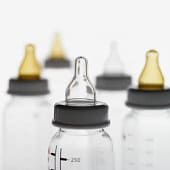Ever since I watched a documentary called ‘The Disappearing Male’ a few months ago whilst flying from Perth to London I’ve been meaning to write about this subject. I only saw this Canadian programme by accident – there was not enough time left of the flight to watch a full movie and the title caught my eye!
And what subject is this? That the prospect that BPA (Bisphenol A), which is found in plastics, is making males infertile and producing more miscarriages.
Even the free Metro paper had a front page article on the subject a couple of weeks ago. But what has finally prompted me to put pen to paper (so to speak) was that a friend’s boyfriend received a sperm test result yesterday and he was devastated that the results were lower than expected. Plus neither of them had ever heard about the potential issues with BPA…
So what is BPA? I suggest you watch the Canadian documentary – The Disappearing Male – as it gives the history of the chemical. But in summary it was originally developed in the 1940’s as an estrogen substitute, but it didn’t work as it only mimicked estrogen. So it was left on the shelf until it was discovered, by mistake, that by adding it to plastics it made them more flexible, more transparent and stronger. Since then its usage has snowballed and it’s everywhere!
The problem with BPA is that it’s an Endocrine-disrupting chemical which mimics the estrogen hormone and interferes with hormone biosynthesis, metabolism and action resulting in adverse developmental, reproductive, neurological and immune effects in humans and wildlife (Ref: Endrocine Today). As BPA is a fake estrogen it appears to affect male sperm levels, increase probability of miscarriages plus (from the Canadian documentary) it could even promote female babies over male babies!
The additive has been banned in Canada, Denmark and 3 US states and some major retailers have stopped selling baby products containing it. But in the UK and Australia it’s still allowed to be added to anything…
How do you know if a plastic contains BPA? Most plastics have a triangle (recycling) symbol imprinted on it with a number, the Plastic Identification Code (PIC). If the number is 3 or 7 then it contains BPA. (Ref: Wikipedia – BPA). PIC 3 plastics are used for items such as juice bottles & cling film, and PIC 7 is used for baby milk bottle & beverage bottles etc. (Ref: Wikipedia – PIC). BPA is also used in the linings in tin cans…
So check the number before buying anything plastic or better still – use glass!
Plastic – not so fantastic after all…


